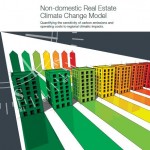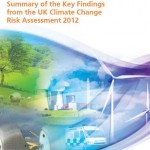Site search:
-
What’s new?
Energy for London Tags
Brent Buildings Camden Carbon Emissions CHP Cities Climate Adaptation Community Heating Community Initiatives Croydon Data DECC Decentralised Energy Distribution ECO Energy Costs Energy Efficiency Enfield FIT Fuel Poverty Funding Green Deal Hackney Haringey Housing Islington Lambeth Library Local Authorities Mayor Newham Ofgem Olympics Photovoltaics Planning RE:FIT RE:NEW Renewable Energy Retrofit Southwark Tower Hamlets Transport Waltham Forest Waste WestminsterEnergy Archives:
- February 2021 (1)
- January 2021 (15)
- December 2020 (15)
- November 2020 (9)
- October 2020 (3)
- August 2020 (5)
- July 2020 (3)
- June 2020 (4)
- April 2020 (10)
- March 2020 (5)
- February 2020 (2)
- January 2020 (3)
- October 2019 (1)
- September 2019 (4)
- August 2019 (2)
- July 2019 (1)
- August 2018 (1)
- November 2016 (8)
- October 2016 (8)
- September 2016 (2)
- August 2016 (8)
- July 2016 (14)
- April 2016 (12)
- March 2016 (16)
- February 2016 (8)
- January 2016 (4)
- December 2015 (1)
- November 2015 (1)
- October 2015 (16)
- September 2015 (3)
- June 2015 (1)
- May 2015 (1)
- April 2015 (1)
- March 2015 (1)
- February 2015 (1)
- January 2015 (1)
- December 2014 (18)
- November 2014 (4)
- August 2014 (8)
- July 2014 (7)
- June 2014 (25)
- May 2014 (8)
- April 2014 (4)
- March 2014 (12)
- February 2014 (7)
- January 2014 (13)
- December 2013 (11)
- November 2013 (15)
- October 2013 (15)
- September 2013 (18)
- August 2013 (5)
- July 2013 (20)
- June 2013 (33)
- May 2013 (8)
- April 2013 (16)
- March 2013 (25)
- February 2013 (14)
- January 2013 (20)
- December 2012 (23)
- November 2012 (23)
- October 2012 (25)
- September 2012 (14)
- July 2012 (12)
- June 2012 (43)
- May 2012 (20)
- April 2012 (8)
- March 2012 (40)
- February 2012 (39)
- January 2012 (40)
- December 2011 (22)
- November 2011 (40)
- October 2011 (33)
- September 2011 (48)
- August 2011 (40)
- July 2011 (58)
- June 2011 (41)
- May 2011 (80)
- April 2011 (38)
- March 2011 (33)
- February 2011 (25)
- January 2011 (24)
- December 2010 (3)
- November 2010 (7)
- October 2010 (6)
- September 2010 (7)
- August 2010 (1)
- July 2010 (2)
- June 2010 (4)
- May 2010 (1)
- March 2010 (3)
- February 2010 (3)
- December 2009 (5)
- November 2009 (2)
- October 2009 (3)
- July 2009 (3)
- June 2009 (1)
- April 2009 (1)
- March 2009 (1)
- February 2009 (1)
- January 2009 (1)
- December 2008 (2)
- October 2008 (1)
- September 2008 (1)
- July 2008 (1)
- March 2008 (2)
- January 2008 (2)
- October 2007 (1)
- September 2007 (3)
- July 2007 (1)
- March 2007 (1)
- February 2007 (3)
- November 2006 (3)
- August 2006 (1)
- February 2006 (1)
- May 2005 (1)
- February 2004 (1)
Tag Archives: Climate Adaptation
Shaping cities for health
May 2012: Researchers have set out in a paper published in the most recent issue of The Lancet that climate change will mean that London will have temperatures more like Hong Kong in the future. Shaping cities for health: complexity and the planning of urban environments in the 21st century highlights that:
The research paper highlights that: “There are 3·2 million dwellings in London, almost all of which will need some modification to meet decarbonisation targets. This huge scale of refurbishment presents enormous and complex challenges—in part because of the nature of London’s buildings. This stock is not only diverse in its construction methods, which span several centuries, but also in ownership. The level of energy efficiency of the stock is also highly variable. Many properties have already undergone some energy efficiency refurbishments that are not, however, adequate for the 2050 commitment. Indeed, these moderately refurbished properties might provide the greatest retrofit challenge.”
The paper picks up on a potential health issue associated with improving the energy efficiency of homes as a result of increasing the air tightness of homes.
“One of the key problems for retrofit policy is to ensure that greater energy efficiency does not compromise health. If energy efficiency is in part achieved though greater ventilation control (reductions in air exchange), ventilation might become insufficient to remove pollutants from indoor sources. Conversely, uncontrolled ventilation impairs protection against outdoor pollution. The optimum ventilation rate for buildings has not been adequately researched, but decarbonisation strategies are prescribing ever tighter ventilation controls. For example, in a mechanical ventilation with heat recovery (MVHR) system, warm, moist air is extracted from kitchens and bathrooms via a duct system and is passed through a heat exchanger before being released into the environment. …Mitigation measures might affect health through a range of pathways, several of which are likely to be as important as the usual exposures, if not more important. Thus a wider array of pathways than has been attempted previously should be considered. Encouragingly, there is at least a growing recognition of the associated complexities, and, for example, relevant guidance for the Building Regulations for England and Wales is continually updating its treatment of building-material permeability and ventilation control.”
Tools for Cooling Urban Heat Islands
June 2012: The Clean Energy Solutions Center (cleanenergysolutions.org) is hosting a series of free webinars including one entitled ‘Global Cool Cities: Tools for Cooling Urban Heat Islands’. Chapter 5 of London’s ‘Climate Change Adaptation Strategy‘ provides detailed information on the challenges faced in urban areas as a result of increasing temperatures and the webinar hosted by Clean Energy Solutions Center will focus on“how cool roof and pavement materials can mitigate urban island heat effects, lower energy costs, and improve the environment.” The webinar takes place on Wednesday, June 13, 2012 2:30 PM – 4:00 PM BST – the link to register is here. Further information on climate change adaptation issues and London can be found here.
‘Agreement struck to prepare communities for climate change’
May 2012: Defra report that “Homes, roads and parks could all be better protected from the effects of climate change after an agreement was struck between ministers and local government.
An agreement between Defra, the Department for Communities and Local Government (CLG) and the Local Government Association (LGA) called for vital public services to be better protected and emergency planning and social care made more resilient after signing a joint statement showing their commitment to adapt the country to climate change.
The agreement was reached at a Climate Summit hosted by the LGA in response to the impacts identified in the UK Climate Change Risk Assessment 2012, published earlier this year.”
The agreement states that “Councils have a critical role to play in working with partners and communities to plan and ensure the UK is better prepared and resilient to climate change” and that potential activities include:
- planning for the long term by reflecting climate risks and sustainable development in Local Plans
- increasing organisational resilience to extreme weather by building climate change risks into corporate risk registers
Read the Defra press release and the full commitment by the LGA, CLG and Defra here.
London’s Buildings need to adapt
 March 2012: Research just released by the Royal Institute of Chartered Surveyors (RICS) highlights the challenges that many buildings will face in the future as a result of a changing climate. Increasing energy use is widely predicted responding to summer temperatures up to two degrees higher by 2030 and up to two degrees cooler in the winter. In particular, the report highlights that it is London ’s schools, offices and hospitals that will incur the largest increase in electricity demand as more power is used to maintain a ‘comfortable environment’. Read the RICS news release here and download the report – the Non-domestic Real Estate Climate Change Model here.
March 2012: Research just released by the Royal Institute of Chartered Surveyors (RICS) highlights the challenges that many buildings will face in the future as a result of a changing climate. Increasing energy use is widely predicted responding to summer temperatures up to two degrees higher by 2030 and up to two degrees cooler in the winter. In particular, the report highlights that it is London ’s schools, offices and hospitals that will incur the largest increase in electricity demand as more power is used to maintain a ‘comfortable environment’. Read the RICS news release here and download the report – the Non-domestic Real Estate Climate Change Model here.
The report states [p10] that this ” research has been made possible only with the release of 64,803 Display Energy Certificate (DEC) records, secured with the help of the Urban Land Institute, which facilitated several Freedom of Information requests to obtain these data.” Unfortunately this data doesn’t appear to have been made publicly available by the Urban Land Institute – however – a simple map of DECs has been created so that individual buildings ratings can be viewed – see www.less-en.org.
Similar data was however also obtained recently by the Centre for Sustainable Energy (CSE) and has been posted online for download at www.cse.org.uk. The spreadsheets contains data on energy use, floorspace, emissions and efficiency ratings for 40,000 buildings of over 1,000m2 in England and Wales that are visited by the public. See an earlier post for additional details.
London faces rising temperatures
 January 2012: The Government published the UK Climate Change Risk Assessment (CCRA) on 25 January 2012, the first assessment of its kind for the UK which highlights the top 100 challenges to the UK faces as a result of a changing climate. Amongst the many changes predicted in the assessment, a number are directly in relation to London, specifically:
January 2012: The Government published the UK Climate Change Risk Assessment (CCRA) on 25 January 2012, the first assessment of its kind for the UK which highlights the top 100 challenges to the UK faces as a result of a changing climate. Amongst the many changes predicted in the assessment, a number are directly in relation to London, specifically:
- On average, hot weather accounts for around 1100 premature deaths a year in the UK. By the 2050s, this figure is projected to increase by between 580 and 5900, with the greatest risk in London and southern England.
- Summer overheating is projected to emerge as a significant risk, potentially contributing to heat-related health problems. In London, for instance, the number of days in an average year when temperatures rise above 26°C is projected to increase from the current figure of 18 to between 27 and 121 by the 2080s.
The Evening Standard summarised the findings thus: London ‘facing killer summers in climate peril’!
Chapter 5 of the London Climate Change Adaptation Strategy (issued in October 2011) focuses specifically on the issue of overheating in London as a result of climate change and commits to taking forward a number of actions including:
- working with boroughs to identify opportunities for combined cooling, heat and power and other forms of low-carbon cooling and
- promoting ‘cool roof technology’ (highly reflective, well-insulated roofs) in London to reduce demand for mechanical cooling.
What are the social impacts of climate change in the UK?
24 November 2011: Joseph Rowntree Foundation (JRF) commissioned research, published today, which highlights that the people who emit the least carbon in the UK are most likely to suffer from the consequences of climate change.
The report – The distribution of UK household CO2 emissions – “provides the first integrated dataset of household emissions and confirms the direct relationship between household income and carbon emissions – the top 10 per cent earners emit more than twice as much carbon as the lowest 10 per cent.”
A second report – ‘Climate change, justice and vulnerability‘ – states that “The most socially vulnerable neighbourhoods in the UK tend to be in urban or coastal locations. There is a North-South divide in extreme socially derived flood-vulnerability in England, while nearly a quarter of London neighbourhoods are classed as extremely socially heat-vulnerable.“
Posted in Data Store, Library, News
Tagged Carbon Emissions, Climate Adaptation, Fuel Poverty
Leave a comment
Local authorities big society and adaptation to climate change
October 2011: Local Government Information Unit (LGIU) report undertaken to:
- Develop a self-help toolkit to support community involvement in, and ownership of, local adaptation
- Devise business models for how local authorities can work with local communities to deliver adaptation.
Globally Resilient City Number 9: London
18 July 2011: Huff Post blog reviewing best practices in mitigating and adapting to climate change in cities. This short piece is on London. It doesn’t mention London’s extremely well thought out draft Climate Change Adaptation Strategy, which comprehensively sets out how climate change will affect London’s risks to flood, drought and heatwave through the century.
Sutton Launch Climate Change Adaptation Strategy
16 June 2011: As part of the Council’s 2020 Vision of ‘One Planet Living’and promoting the Borough as London’s most sustainable suburb, Sutton’s Climate Change Adaptation Strategy seeks to ensure that the location, layout and design of all new developments minimise vulnerability of people and propertyand are fully adapted and resilient to future climate impacts.
London: Garden City?
 8 June 2011: A study by the London Wildlife Trust revealing that London’s gardens – which make up nearly a quarter of Greater London – are changing from green to grey. These losses have implications for London’s wildlife and our ability to adapt to the impacts of climate change. A summary of the report, London:Garden City?, is available here.
8 June 2011: A study by the London Wildlife Trust revealing that London’s gardens – which make up nearly a quarter of Greater London – are changing from green to grey. These losses have implications for London’s wildlife and our ability to adapt to the impacts of climate change. A summary of the report, London:Garden City?, is available here.
The role of financial services sector in mitigating and adapting to climate change
September 2007: GLA Economics Current Issues Note 19 – this paper examines how London’s financial services sector is helping society mitigate and adapt to climate change. Amongst other things this involves the financing of new environmental technologies; carbon trading; and creating markets, insurance products and other innovative services.

